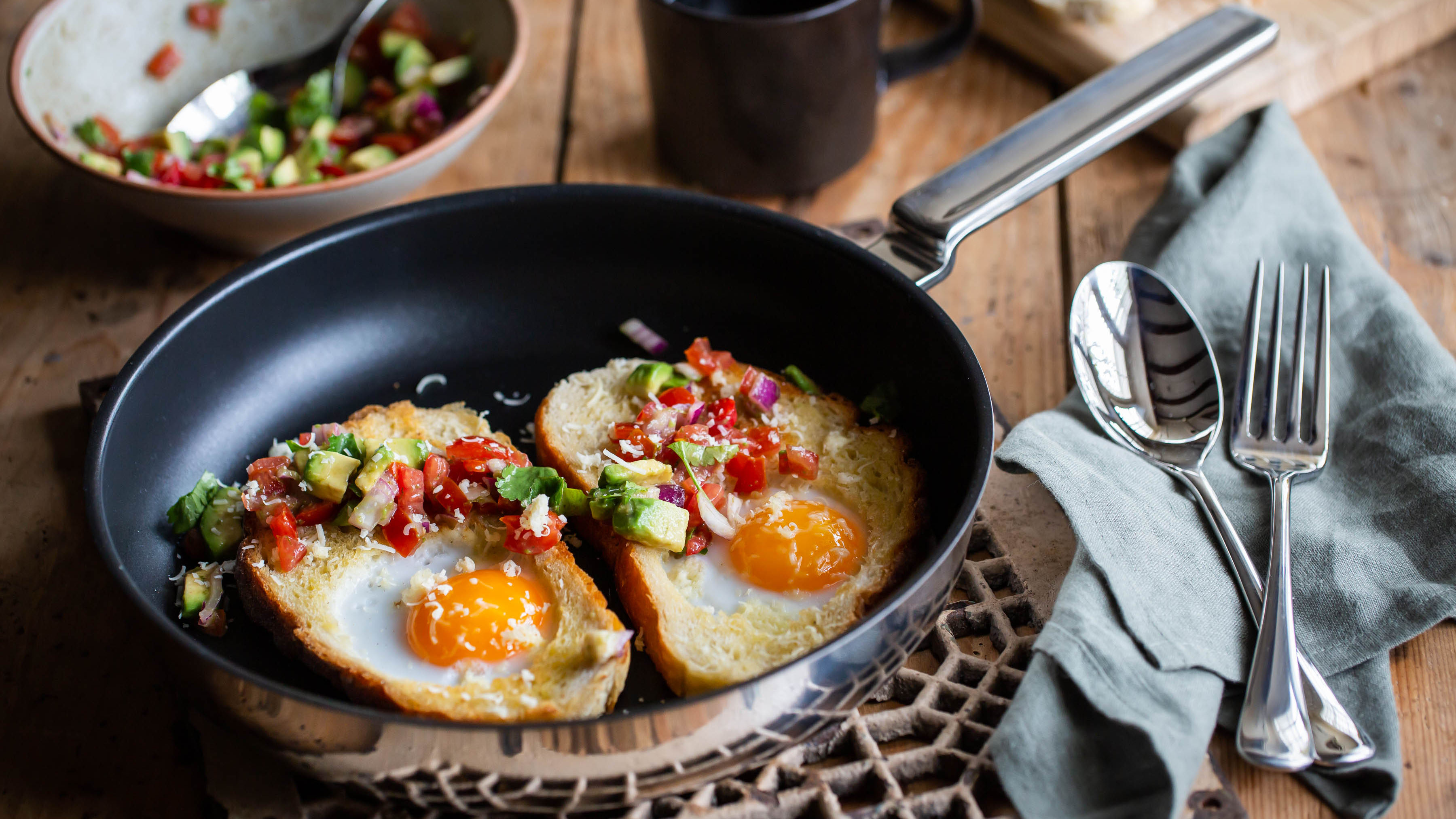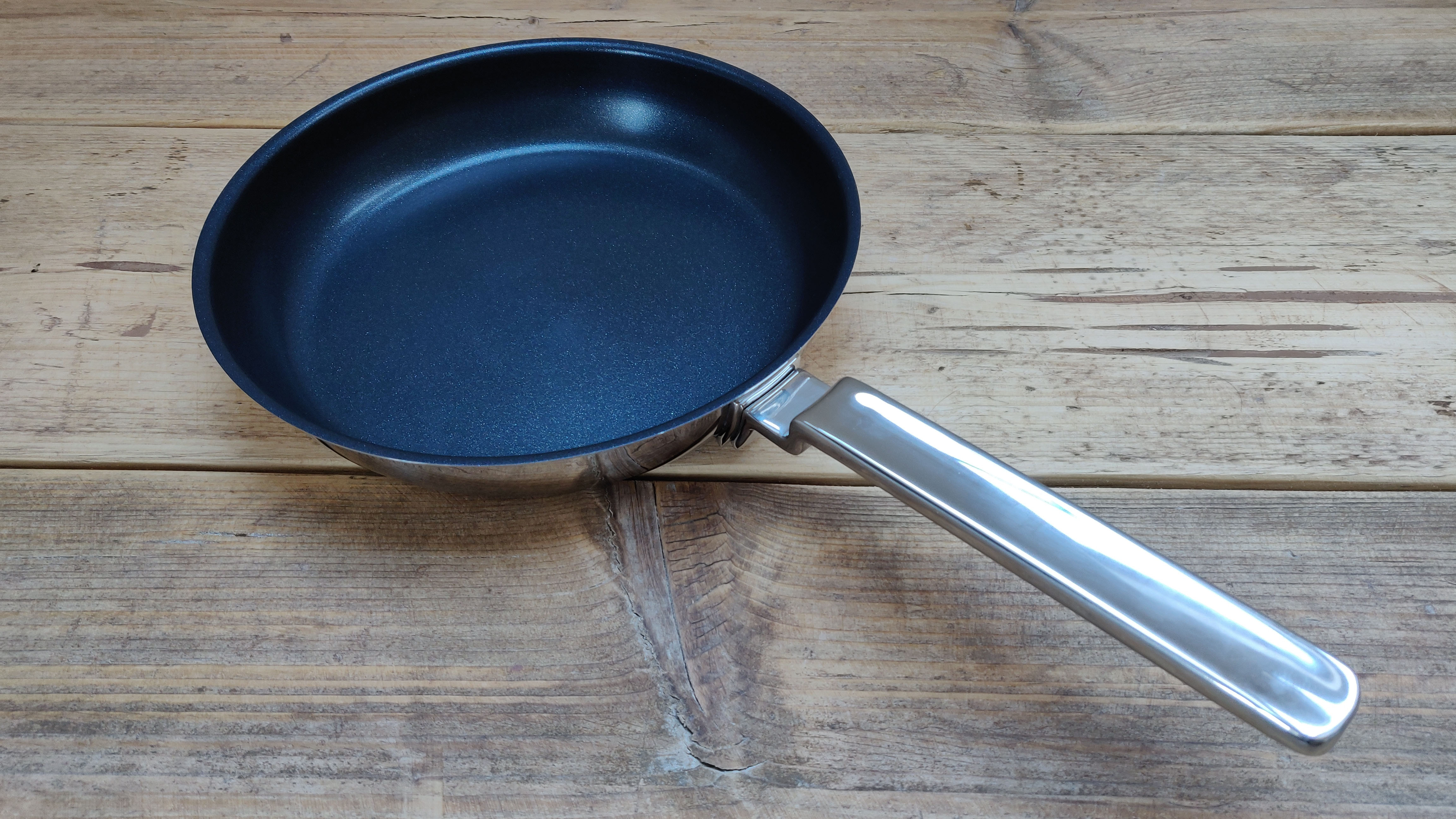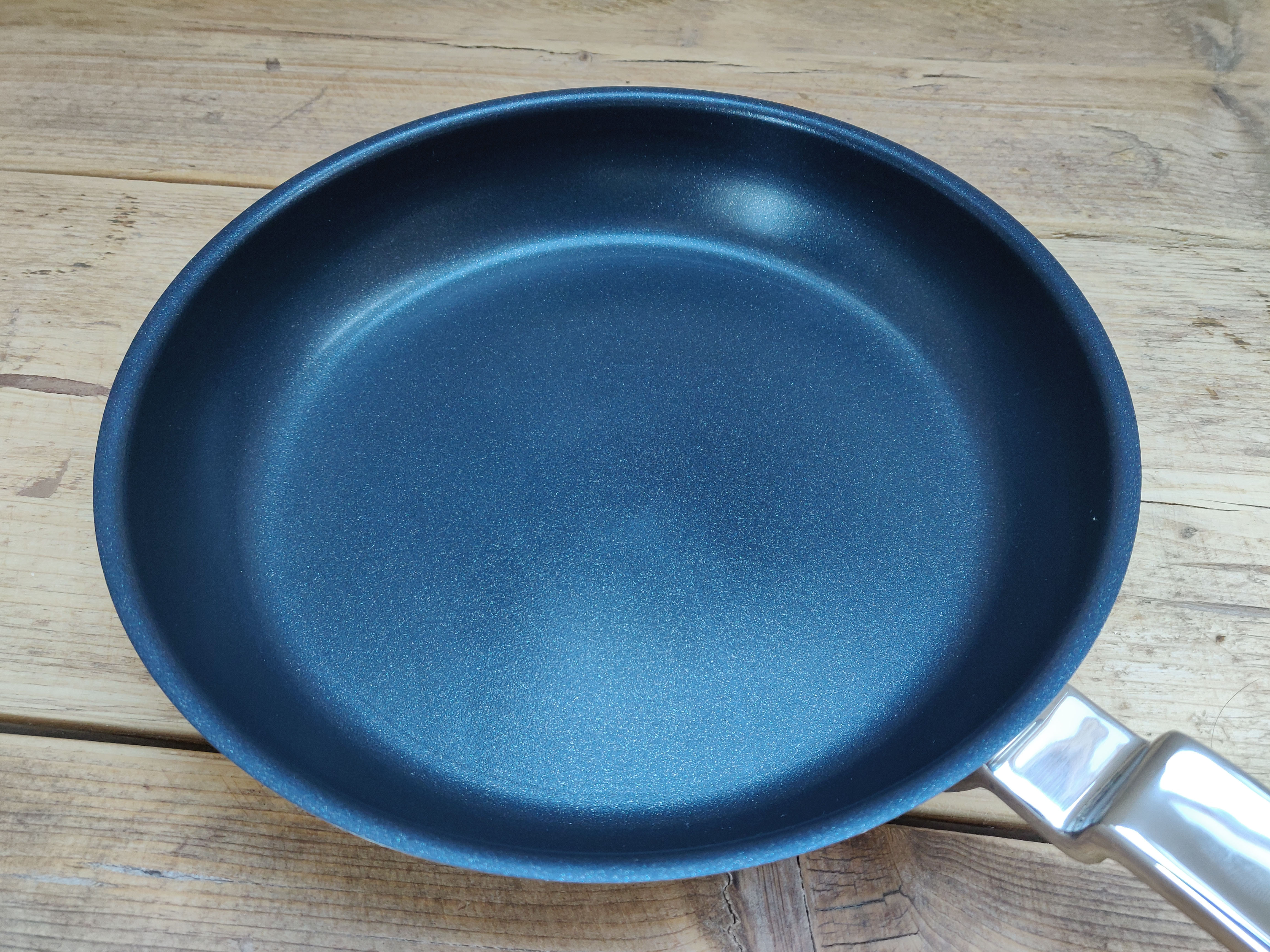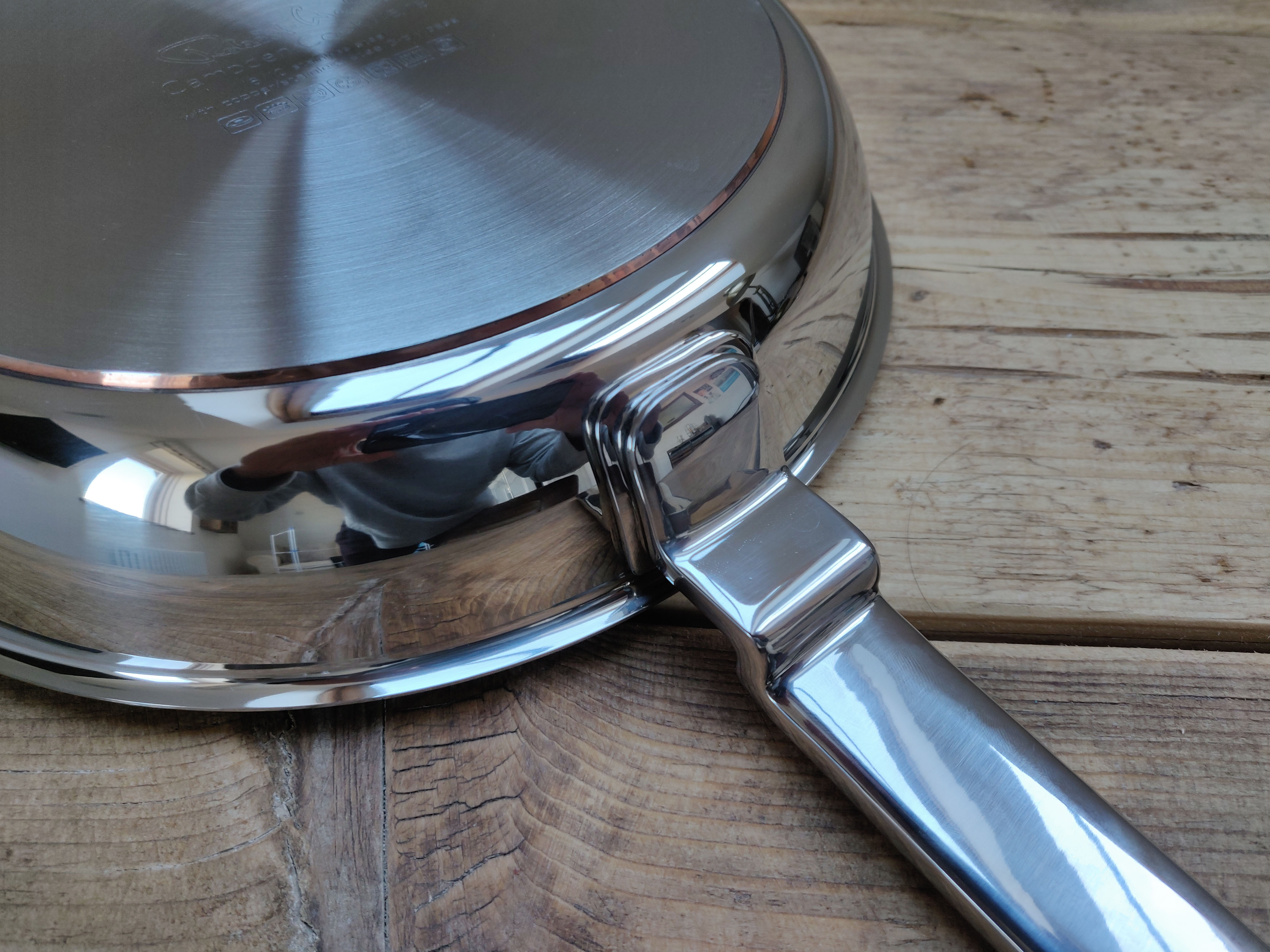Robert Welch Campden review: non-stick frying pan with heaping helpings of style and longevity
Beautiful and capable in equal measure, Robert Welch's Campden non-stick pan is a very solid choice in every sense


-
+
Well built
-
+
Looks great
-
+
Hefty construction includes copper for excellent heat conduction
-
-
Handle isn't riveted on
Why you can trust T3
Robert Welch cookware has always had a great reputation, particularly when it comes to sleek design. The eponymous company founder was a celebrated British silversmith and designer – awarded an MBE in 1979 no less – and though he passed away in 2000, the company remains in family hands and retains the same reputation for quality.
As you’d expect from Robert Welch, the Campden non-stick frying pan is a thing of beauty. The question is though, will it hold up to the rigours of heavy kitchen use? Non-stick pans have always had a reputation for being rather flimsy – an echo of the brittle Teflon coatings they used to use. That said, modern non-stick coatings are much hardier than the old ones. Many of these modern coatings still use Teflon (you will see the term PTFE used a lot – this is polytetrafluoroethylene, the synthetic polymer that is trademarked as Teflon) but they also incorporate other materials in multiple layers to increase durability.
The Campden uses a new high-grade PTFE non-stick coating that claims to be extremely tough. So, is this pan just for show or does it do the job too? As you can probably tell from the 5 stars and Platinum Award above, this is one of the best non-stick frying pans you can buy. Let's find out why…

Robert Welch Campden non-stick frying pan: Build
At 1.6 kilograms, the Campden is really heavy for a 24cm frying pan. That’s a good thing – most of that weight is concentrated in the base of the pan, which means that it conducts and retains heat much more evenly. You’ll doubtless have heard chefs talk about pans needing to have ‘heavy bottoms’, often with a compulsory smirk. A thin-bottomed pan heats up very quickly but it doesn’t distribute the heat effectively and that results in hot spots and burnt food. A heavy bottom (chortle) stores and spreads heat much more effectively, which lets you use the whole pan surface evenly and with more control.
The base itself is 3-ply with two layers of 18/10 stainless steel sandwiching a layer of copper. 18/10 is the standard for good quality stainless steel – the numbers refer to the levels of chromium and nickel in the stainless steel, which add shine and corrosion resistance.
If you look closely you can see a bit of the copper layer in the underside of the pan – another nice design touch. Copper remains the metal of choice for pans – aside from the beautiful colour and shine it’s a much better conductor of heat than stainless steel and iron. Aluminium is a great heat conductor but it pales in comparison with copper, being only 60% as conductive as its upscale rival metal. Copper can be expensive, but a little goes a long way in a pan. In this case the copper layer conducts and distributes the heat in between the two stainless steel layers.
The step in the handle is a really neat design touch that separates the Campden from similar frying pans. The handle itself is spot welded to the pan, which has advantages and disadvantages. On one hand there are no rivets on the inside of the pan, which makes the pan easier to use and easier to clean. On the other hand, it’s much harder to assess the integrity of a welded handle. Pans wear and age over time of course – with a riveted handle you can see that the rivet is coming loose, whereas a welded handle is more inclined to fail without prior warning. Also, you’ll have to find someone to weld your handle back on. Unless you’re a welder.
Get all the latest news, reviews, deals and buying guides on gorgeous tech, home and active products from the T3 experts
A quick note on the warranty. Robert Welch covers all its cookware for a minimum 25 year guarantee, but this guarantee is designed to cover manufacturing defects and doesn’t cover standard wear and tear. Exactly what standard wear and tear looks like with a non-stick pan is a murky subject, so do bear that in mind. For what it’s worth, Robert Welch says that the non-stick could last 5-10 years with reasonable care.

Robert Welch Campden non-stick frying pan: Non-stick
The Campden uses a new professional-grade PTFE coating called Durit Professional S developed by Swiss company ILAG. You can head over to ILAG’s website and get all sorts of interesting information on their different non-stick coatings but suffice to say, Durit Professional S has aced all of their abrasion and non-stick tests – you can even watch videos of the tests if you like that sort of thing.
Durit Professional S applies multiple layers of polymer to create a much more durable non-stick surface. Firstly the pan is treated before the first layer of PTFE is added, which supposedly creates a much better adhesion between the pan and the polymer. The bottom layer of non-stick is ceramic-reinforced for extra toughness, then there’s a reinforced middle layer which gives wear resistance and a top layer which seals the surface. The upshot is that this PTFE coating should be able to withstand a good deal of usage.
This pan is dishwasher-safe but ILAG recommends that you don’t put it in the dishwasher as it can weaken the durability of the pan and remove the embedded oils. Ultimately, the better you look after your pans, the longer you’ll have them for. The nature of non-stick coating is still that it is a temporary thing, but this non-stick should last you a number of years if you treat it well.

Robert Welch Campden non-stick frying pan: Performance
The excellent build quality is certainly reflected when you start to use the pan. The extra weight is really noticeable in the hand – I don’t usually have a problem flipping a pancake in a frying pan but it takes a bit of effort in the Campden. Personally I think that’s great – it feels like a solid, well-built pan that will last the course. The pan came up to temperature in just under 3 minutes over a medium gas heat and I found that it retained heat really well when cooking a variety of things.
The 3-ply system also means that the Campden works well with every cooking method, including electric and induction hobs. I wasn’t able to test the pan on halogen or ceramic but Robert Welch guarantees that its 3-ply pans work on any of these hobs.
ILAG recommends that you shouldn’t use metal implements on their non-stick, but I did anyway because that’s what people do. After a few days of scraping and stirring (and multiple runs through the dishwasher) there are some small superficial scuffs and scratches but they are barely noticeable unless you go looking for them. It’s nothing I wouldn’t expect and it doesn’t affect the performance of the pan at all.
Perhaps because the handle is metal and the connection between the handle and the base is also metal, I found that the base of the handle could get quite hot when cooking over a high heat. It’s generally better to avoid high heat cooking with non-stick pans – PTFE is stable up to a temperature of 260ºC but after that it can start to degrade. The handle is noticeably long, so it doesn’t present much of a problem.

Robert Welch Campden non-stick frying pan: Verdict
Robert Welch Campden offers build quality that's truly excellent, and performs really well on any type of hob.
The big question is, how well will that non-stick coating hold up over time? I think with really good care, there’s no reason why you couldn’t get a minimum of 5 years out of this pan, perhaps even a decade. The price point is a little steep for a non-stick pan, but if you use non-stick a lot and you want something that will handle heavy usage, I think the Campden is a great option.